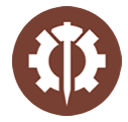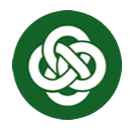Glossaire Altered
Nombre d'entrées : 3
Voir les sources du contenu
2.2.5 Version
2.2.5.a La version est un nombre qui distingue les différentes versions d'une même carte unique.
2.2.5.b Les cartes peuvent avoir des versions multiples, souvent dues à des réimpressions ou des changements dans les règles.
2.2.5.c La version d'une carte est généralement indiquée dans un coin de la carte ou par un texte spécifique.
1.1.4 Jeu construit
1.1.4.a En jeu construit, un joueur peut utiliser n'importe quelle carte de sa collection pour constituer son deck.
1.1.4.b Un deck construit doit inclure exactement 1 Héros.
1.1.4.c Un deck construit doit inclure au moins 39 autres cartes.
1.1.4.d Un deck construit ne peut inclure que des cartes de la même faction que son Héros.
1.1.4.e Un deck construit ne peut inclure que 3 cartes portant le même nom.
Remarque : dans Altered, contrairement à de nombreux autres jeux de cartes à collectionner, des cartes portant le même nom peuvent avoir des caractéristiques, des raretés et des factions différentes. Un joueur lors d'un événement construit doit préciser quelle version d'une carte il joue.
1.1.4.f Un deck construit peut inclure au maximum 15 cartes rares ( ).
).
1.1.4.g Un deck construit peut inclure au maximum 3 cartes uniques ( ).
).
Pour plus de détails, voir Standard (Mode de jeu) ou Multijoueur 2v2 (Mode de jeu)
1.2.2 Objets
1.2.2.a Les objets sont les pièces du jeu d'Altered.
1.2.2.b La plupart des éléments dans une partie d'Altered sont des objets, des propriétés d'objets, ou des ensembles d'objets.
1.2.2.c Les objets ont des caractéristiques :
- Type (Personnage, Emblème, Héros, Permanent, Région, Sort)
- Sous-type
- Nom
- Rareté (commune
 , rare
, rare  , unique
, unique  )
) - Version
- Coût de la main
- Coût de la réserve
- Faction (Axiom
 , Bravos
, Bravos  , Lyra
, Lyra  , Muna
, Muna  , Ordis
, Ordis  , Yzmir
, Yzmir  )
) - Statistiques (un nombre pour chaque
,
,
)
- Capacités
- Limite de réserve (seulement pour les Héros)
- Limite de repère (seulement pour les Héros)
- Durée (seulement pour les Emblèmes)
1.2.2.d Un objet peut ne pas avoir certaines de ces caractéristiques.


